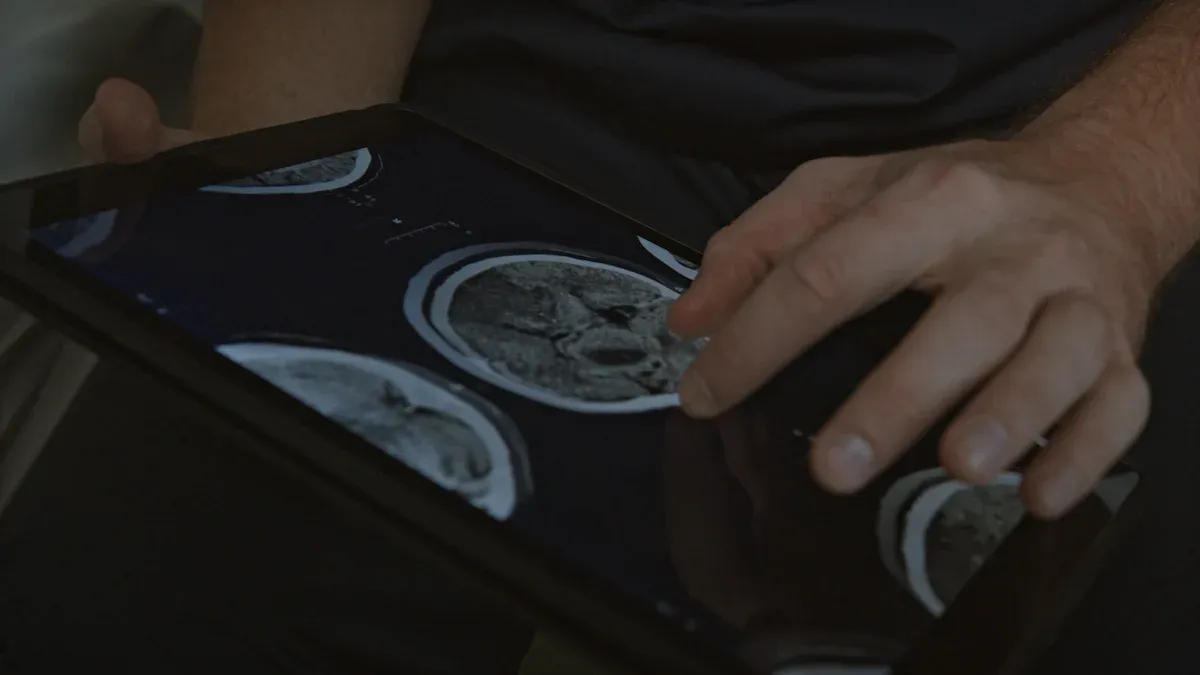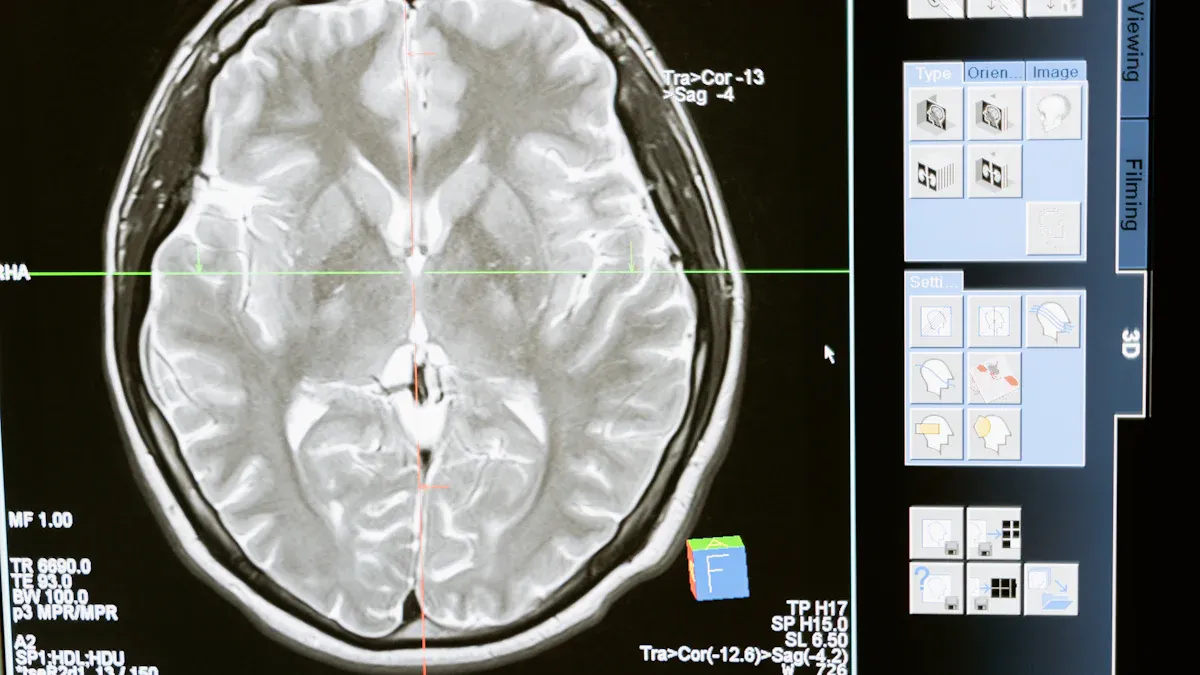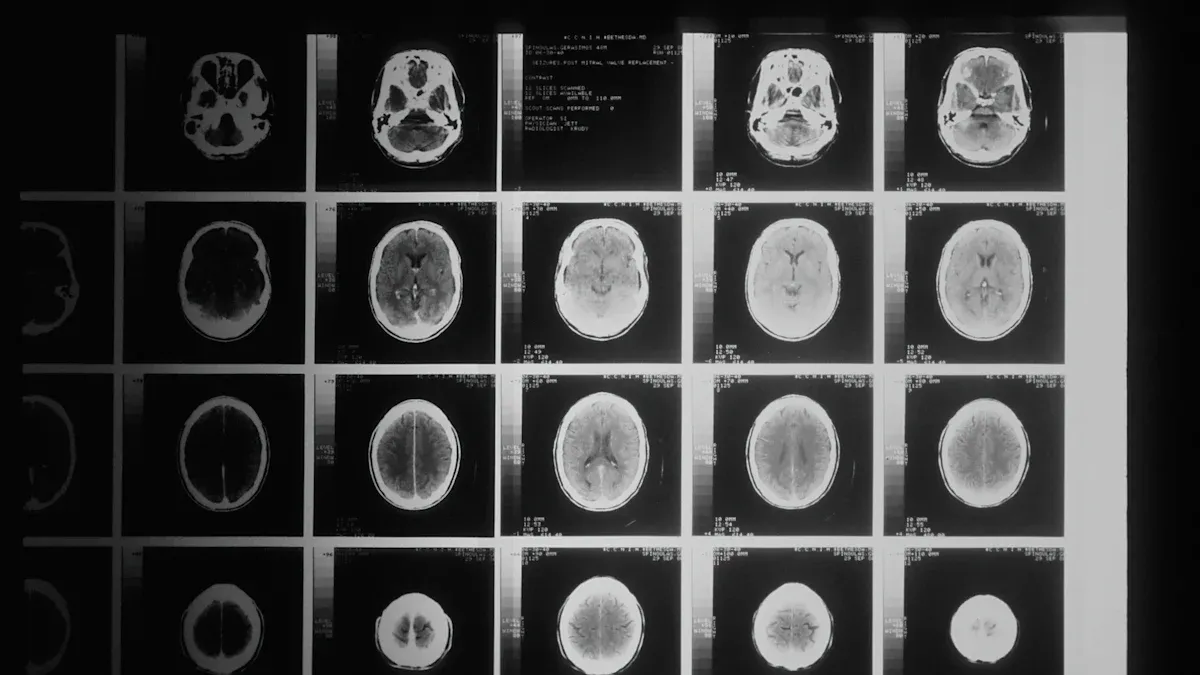What Are Primitive Neuroectodermal Tumors Today?

Primitive neuroectodermal tumors are rare and aggressive cancers that develop from immature nerve cells. These tumors primarily affect children and adolescents, with most cases occurring in white and Hispanic populations. Each year, about 2.9 per million individuals under 20 are diagnosed with tumors from the Ewing family, which includes PNETs. These tumors make up 4-17% of all pediatric soft tissue cancers. Advances in molecular research have transformed how you understand and classify these tumors, paving the way for better diagnosis and treatment.
Key Takeaways
Primitive neuroectodermal tumors (PNETs) are rare cancers in kids and teens. They often grow and spread quickly.
New genetic studies have helped doctors better group PNETs into types. This helps them plan the right treatments.
Diagnosing PNETs now uses genetic tests. These tests show differences between tumors that look alike but act differently.
Treating PNETs works best with personalized medicine. Doctors pick treatments based on the tumor's special genetic traits.
Research is still needed to find new treatments and help patients with these tough tumors.
Understanding Primitive Neuroectodermal Tumors

What Are Primitive Neuroectodermal Tumors?
A primitive neuroectodermal tumor is a rare and aggressive cancer that originates from neuroectodermal cells. These cells are part of the early development of your nervous system. Most cases occur in children and young adults, and the tumors often display undifferentiated small round cells under a microscope. Genetic changes, such as translocations involving chromosomes 11 and 22, are frequently linked to these tumors. You can categorize them into two main types: central nervous system (CNS) PNETs and peripheral PNETs (pPNETs). The latter belongs to the Ewing family of tumors.
Common Features of PNETs
You might notice that primitive neuroectodermal tumors share several clinical features due to their aggressive nature. These include:
Pain and swelling in nearby tissues caused by the tumor's growth.
Neurological symptoms like seizures, headaches, or loss of coordination.
Fatigue, lethargy, or unexplained weight changes.
Specific symptoms depending on the tumor's location, such as nasal obstruction, neck masses, or changes in personality.
These symptoms often result from the tumor pressing on surrounding structures or disrupting normal body functions.
Where PNETs Are Found in the Body
Primitive neuroectodermal tumors can develop in different parts of your body. CNS PNETs arise within the central nervous system, including the brain and spinal cord. Peripheral PNETs, on the other hand, form in tissues outside the central and autonomic nervous systems. Here's a quick overview:
Type of PNET | Location in the Body |
|---|---|
CNS PNET | Central nervous system |
pPNET | Tissues outside the nervous system |
Understanding where these tumors occur helps doctors determine the best diagnostic and treatment strategies for you.
Historical Classification of Primitive Neuroectodermal Tumors
Early Definitions and Grouping
In the past, doctors grouped primitive neuroectodermal tumors under a single broad category. This classification relied heavily on the tumors' appearance under a microscope. You would see small, round, blue cells that looked similar across different cases. Because of this, scientists believed these tumors shared a common origin. They used terms like "small round blue cell tumors" to describe them. This grouping included tumors found in the brain, spinal cord, and other parts of the body.
However, this approach oversimplified the complexity of these tumors. It ignored the differences in their genetic makeup and behavior. At the time, researchers lacked the tools to study these details. As a result, many tumors were misclassified, leading to challenges in diagnosis and treatment.
Challenges in the Original Classification
The original classification faced several challenges. You might find it surprising that tumors with similar appearances could behave very differently. Some grew rapidly, while others responded better to treatment. This inconsistency made it difficult for doctors to predict outcomes or choose the best therapies.
Another issue was the overlap with other tumor types. For example, some primitive neuroectodermal tumors resembled other cancers, such as rhabdomyosarcoma or lymphoma. This similarity often led to confusion during diagnosis. Without advanced tools, doctors relied on limited information, which sometimes resulted in incorrect treatment plans.
The Role of Limited Diagnostic Tools
In the early days, diagnostic tools were basic. Pathologists relied on light microscopes to examine tumor cells. You can imagine how challenging it was to differentiate between tumors based solely on their appearance. Techniques like immunohistochemistry or genetic testing were not yet available.
This lack of technology meant that doctors could not identify the unique genetic features of each tumor. As a result, they treated all primitive neuroectodermal tumors in the same way, even though these tumors varied significantly. This one-size-fits-all approach often led to suboptimal outcomes for patients.
Advances in molecular and genetic research eventually addressed these limitations. These breakthroughs allowed scientists to reclassify these tumors based on their genetic profiles, paving the way for more accurate diagnoses and personalized treatments.
Why the Classification of Primitive Neuroectodermal Tumors Changed
Advances in Molecular and Genetic Research
Advances in molecular and genetic research have revolutionized how you understand and classify tumors. In the past, doctors relied on microscopes to examine tumor cells, but this approach could not reveal the genetic differences between tumors. Today, scientists use advanced techniques like genetic sequencing to study the DNA of tumors. This allows them to identify specific mutations and chromosomal changes, such as translocations involving chromosomes 11 and 22, which are common in certain types of tumors.
These breakthroughs have shown that tumors once grouped together, like primitive neuroectodermal tumors, actually have distinct genetic profiles. This discovery has helped researchers reclassify these tumors into more precise subtypes. By understanding the genetic makeup of each tumor, doctors can now provide more accurate diagnoses and develop targeted treatments.
Identification of Tumor Subtypes
The identification of tumor subtypes has been a game-changer in cancer research. Primitive neuroectodermal tumors were once considered a single category, but scientists now know they include several distinct subtypes. For example, central nervous system (CNS) PNETs differ significantly from peripheral PNETs (pPNETs) in their genetic features and behavior.
This reclassification has improved your ability to predict how a tumor will behave and respond to treatment. It has also highlighted the need for personalized medicine, where treatments are tailored to the specific characteristics of each tumor. However, this progress has made it harder to calculate survival rates for PNETs. Between 2000 and 2014, the small number of cases made it impossible to determine accurate survival statistics. As of 2016, the reclassification of PNETs has further complicated these estimates.
Limitations of the Historical Approach
The historical approach to classifying tumors had significant limitations. Grouping tumors based solely on their appearance under a microscope ignored their genetic differences. This led to misclassification and inconsistent treatment outcomes. For example, two tumors that looked similar might behave very differently, with one growing rapidly and the other responding well to therapy.
The lack of advanced diagnostic tools also made it difficult to distinguish between PNETs and other cancers, such as lymphoma or rhabdomyosarcoma. This often resulted in incorrect diagnoses and suboptimal treatment plans. By relying on outdated methods, doctors could not provide the level of care that patients needed.
Modern research has addressed these challenges by focusing on the genetic and molecular features of tumors. This shift has paved the way for more accurate classifications and better treatment options, giving you hope for improved outcomes.
Current Classification of Primitive Neuroectodermal Tumors

The WHO’s Role in Reclassification
The World Health Organization (WHO) has played a key role in redefining how you understand primitive neuroectodermal tumors. In 2016, the WHO updated its classification system for central nervous system (CNS) tumors. This update introduced molecular and genetic profiling as essential tools for diagnosis. Instead of relying solely on how tumors look under a microscope, doctors now examine their genetic features. This shift has allowed researchers to identify distinct subtypes of tumors that were once grouped together.
For example, CNS primitive neuroectodermal tumors are no longer considered a single category. The WHO reclassified many of these tumors into other groups, such as embryonal tumors or gliomas, based on their genetic profiles. This change has improved diagnostic accuracy and helped doctors develop more targeted treatment plans for you.
Key Subtypes and Their Characteristics
The reclassification of primitive neuroectodermal tumors has revealed several key subtypes, each with unique characteristics. CNS PNETs, for instance, are now recognized as genetically distinct from medulloblastomas, even though both arise in the brain. Peripheral PNETs, on the other hand, belong to the Ewing family of tumors and share similarities with Ewing sarcoma. These tumors often show neural differentiation, which means they develop features of nerve cells.
Understanding these subtypes helps doctors predict how a tumor will behave. For example, CNS PNETs tend to occur in the brain's supratentorial region, while peripheral PNETs form in tissues outside the central nervous system. This knowledge allows doctors to tailor treatments to the specific needs of each patient.
Differences Between CNS and Non-CNS PNETs
You might wonder how CNS and non-CNS primitive neuroectodermal tumors differ. The table below highlights their key distinctions:
Type of PNET | Location | Behavior |
|---|---|---|
CNS PNET | Supratentorial (brain) | Genetically distinct from medulloblastomas |
Peripheral PNET | Peripheral tissues | Similar to Ewing sarcoma, differing in neural differentiation |
These differences emphasize the importance of precise classification. By understanding where a tumor originates and how it behaves, doctors can choose the most effective treatment strategies for you.
Implications of the Current Understanding of Primitive Neuroectodermal Tumors
Improved Diagnostic Accuracy
The reclassification of primitive neuroectodermal tumors has significantly improved how doctors diagnose these rare cancers. By focusing on genetic and molecular profiling, doctors can now identify the unique characteristics of each tumor. This approach eliminates the confusion caused by tumors that look similar under a microscope but behave differently. For example, central nervous system (CNS) tumors are no longer grouped with peripheral tumors, allowing for more precise diagnoses.
Accurate diagnosis helps you understand your condition better and ensures that doctors choose the most effective treatment plan. However, the small number of cases and the reclassification of these tumors have made it difficult to calculate survival rates. Between 2000 and 2014, researchers could not determine five-year survival statistics for adults due to limited data. As of 2016, the updated classification system has further complicated these estimates.
Advances in Treatment Options
The current understanding of primitive neuroectodermal tumors has also led to better treatment strategies. Doctors now tailor treatments based on the tumor's location and genetic profile. Common treatment options include:
Surgery to remove as much of the tumor as possible.
Radiation therapy, especially for patients aged three years or older.
Participation in clinical trials exploring chemotherapy, targeted therapy, or immunotherapy.
These advancements give you access to more effective and personalized care. Clinical trials, in particular, offer hope by testing innovative therapies that may improve outcomes.
The Role of Personalized Medicine
Personalized medicine has become a cornerstone of treating primitive neuroectodermal tumors. By analyzing the tumor's genetic makeup, doctors can predict how it will respond to specific treatments. This approach ensures that you receive therapies designed to target your tumor's unique features.
For instance, CNS tumors and peripheral tumors differ in their genetic profiles and behavior. Understanding these differences allows doctors to select treatments that maximize effectiveness while minimizing side effects. Personalized medicine not only improves your chances of recovery but also reduces the risk of unnecessary treatments.
The shift toward personalized care reflects the progress made in understanding these complex tumors. It highlights the importance of continued research to refine diagnostic tools and develop innovative therapies.
The understanding of a primitive neuroectodermal tumor has transformed through advances in molecular and genetic research. This progress has improved diagnosis and treatment, offering hope for better outcomes. Future research could focus on epigenetic regulation, dysregulated signaling pathways, and drug development targeting these alterations. These efforts will deepen your understanding of tumor biology and lead to innovative therapies. Continued exploration remains essential to combat these rare and aggressive cancers effectively.
FAQ
What causes primitive neuroectodermal tumors?
PNETs develop due to genetic mutations in neuroectodermal cells. These mutations often involve chromosomal translocations, such as between chromosomes 11 and 22. Scientists are still studying the exact triggers, but these changes disrupt normal cell growth, leading to tumor formation.
Are primitive neuroectodermal tumors hereditary?
Most PNETs are not hereditary. They usually result from spontaneous genetic mutations during development. However, rare genetic syndromes, like Li-Fraumeni syndrome, may increase your risk of developing these tumors.
How are PNETs diagnosed?
Doctors use imaging tests like MRI or CT scans to locate the tumor. A biopsy confirms the diagnosis by analyzing the tumor’s cells. Genetic and molecular profiling helps identify the tumor subtype, improving diagnostic accuracy.
Can primitive neuroectodermal tumors be cured?
Treatment success depends on factors like tumor location, size, and subtype. Surgery, radiation, and chemotherapy often improve outcomes. Early diagnosis and personalized treatment plans increase your chances of recovery.
What is the survival rate for PNETs?
Survival rates vary by tumor type and treatment. CNS PNETs have lower survival rates compared to peripheral PNETs. Advances in genetic profiling and targeted therapies continue to improve outcomes for patients.
See Also
Understanding Extragonadal Germ Cell Tumors And Their Formation
Exploring Gestational Trophoblastic Tumors And Their Varieties
A Comprehensive Guide To Astrocytoma And Its Variants
Simplifying The Causes Of Gastrointestinal Stromal Tumors
Recognizing Symptoms And Treatments For Choroid Plexus Carcinoma
